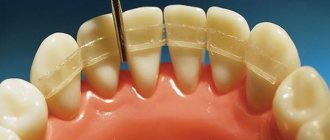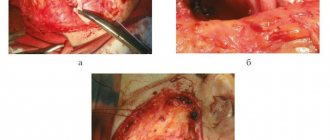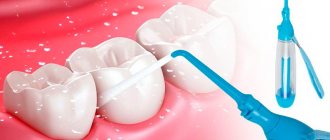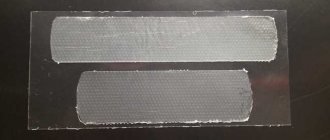Two-stage dental implantation
is a classic implantation technique that involves two stages:
- Installation of the implant and its engraftment into the bone tissue (osseointegration) within 3 - 6 months.
- Fixation of the gum former and after 2 weeks - fixation of a temporary prosthesis on the implant, and later - a permanent one.
3 reasons to contact Esthetic Classic Dent
One of the important features of the two-stage method is the high demands placed on bone tissue.
.
The fact is that after the loss of teeth, jaw atrophy gradually occurs, and the bone volume will not be enough to implant implants. Therefore, quite often before two-stage implantation it is necessary to carry out bone tissue augmentation
.
After this procedure, you need to wait for complete osseointegration of the implanted material, and only then install the implants. Usually this becomes possible after 3 - 4 months
.
Indications and contraindications
Two -stage dental implantation is most often used for prosthetics of one or several teeth in the lateral zone
.
This is due to the fact that the chewing teeth bear the maximum mechanical load. If the implant is immediately subjected to such strong pressure, the tissue around it may become inflamed, resulting in rejection of the artificial root. Therefore, a temporary crown
is not installed during the implant healing period. However, in the chewing area, its absence will not be noticeable to others.
This technology is also used when installing implants for subsequent fixation of a complete denture on them in the absence of all teeth. To securely secure a removable or fixed full denture with fourteen crowns
, you will need four to eight implants on one jaw. And a prosthesis that replaces three consecutive teeth will be firmly held on two implants.
Two-stage implantation is not performed if the patient has the following contraindications:
- tuberculosis;
- osteoporosis;
- oncological diseases;
- poor blood clotting;
- diseases of the immune system;
- chronic failure of internal organs.
One-stage implantation
Despite the name, this method of restoring a lost tooth includes several steps:
Preparation. In addition to standard diagnostic procedures, a special impression is made so that a dental laboratory specialist can create a temporary crown according to individual parameters.
Implant installation. Most often, the doctor gains access to the bone tissue immediately after tooth extraction - he widens the hole and installs the implant without resorting to creating a bed. The difference between one-stage implantation is also that the upper part of the structure remains above the mucous membrane, and the doctor sutures the gum around. (In two-stage implantation, the mucous membrane is sutured over the implant with a plug, which requires repeated tissue incision in the future).
Orthopedic stage. The doctor installs a temporary crown, and after the tissue has healed and the titanium root has engrafted, a permanent one is fixed onto it. Engraftment may take an average of 3–5 months.
It is worth noting that the possibility of installing a temporary crown is associated with the special structure of the titanium root used for one-stage implantation. It is one-piece - that is, the root itself is already connected to the abutment on which the prosthesis is fixed. The implant is equipped with a special thread, which allows you to “screw” it into the bone without drilling into the bone. Due to these features, the implant is immediately fixed reliably, and therefore is quite capable of withstanding the load of a temporary crown.
Doctors at our clinic
Shmatov Konstantin Vladimirovich
More about the doctor
Shalygin Andrey Viktorovich
More about the doctor
Kim Yulia Vyacheslavovna
More about the doctor
Our certificates and licenses
Advantages of the method
The main advantage of two-stage dental implantation is the minimal risk of implant rejection. However, this technology has other important advantages.
- Ideal aesthetics due to the formation of an even gingival contour and the use of individual abutments.
- The ability to replace any number of teeth in a row with single crowns or dental bridges without artificial gums.
- Reducing the cost of prosthetics through the use of removable dentures that are securely fixed to implants, do not fall out and do not cause discomfort.
Methods depending on the depth of implant installation in the jawbone
Intramucosal
This is a mini-implantation procedure in which mini-implants are inserted into the jaw. Compared to classic models, they are smaller in diameter (1.8-2.4 mm) and length (6-10 mm). They are mainly used as a temporary solution for removable prosthetics on implants. Fixation in the gum is performed by puncture, without involving bone structures.
Advantages of the method
- no need to build up the jawbone for atrophy
- easy and quick installation
- accelerated rehabilitation
Flaws
- service life up to 10 years
- inability to withstand heavy chewing loads
Intraosseous
Characteristic of classic two-stage implantation. Standard two-piece rod models are used, up to 20 mm long, which are fixed in the cancellous layer of bone.
pros
- maximum percentage of engraftment
- stimulating bone tissue to compact around the implant
Minuses
- requirements for the condition of the jawbone
Basal
It involves the installation of elongated single-piece or plate-type implants into the deeper cortical (basal) part of the bone (less susceptible to atrophic processes) surrounding the spongy layer. The dentures are installed immediately after the implants are inserted.
Advantages
- fast dental restoration
- no requirements for bone tissue condition
Flaws
- high risk of rejection
- overload of implants during meals
- destruction of cortical bone due to rejection of the structure
- problematic denture hygiene
Our specialists never risk the patient’s health, therefore they choose only proven implantation protocols and types of dental implants. Basal implantation is not one of them, since the safety of its use has not been confirmed by reliable studies to date.
Zygomatic
Relatively new technique. Indicated for the restoration of missing maxillary molars against the background of severe bone tissue atrophy. Special elongated models of Zygoma implants (cylindrical screw, up to 6 cm long) are fixed into the zygomatic bone.
Advantages
- no sinus lift required
- Possibility of combination with other designs
Flaws
- traumatic installation
- the development of complications, including decreased vision, is possible
- high price
- no long-term results of successful engraftment
The Center for Private Dentistry does not use zygomatic implantation. We cannot guarantee the patient a long-term treatment result due to a large list of possible complications and the lack of clinical studies confirming its effectiveness and safety.
Description of two-stage dental implantation
Preparation
Before the operation, each patient undergoes tests to identify possible contraindications and undergoes X-ray diagnostics so that the doctor can calculate the future location of the implants based on photographs of the jaw. In addition, oral cavity sanitation is carried out, including professional hygiene, treatment of caries and gum diseases
.
Gum opening
In order to reach the jawbone where the artificial root will be implanted, the doctor applies local anesthesia and uses a surgical scalpel to separate the flap from the gum. This can also be done using a laser beam, which significantly reduces tissue trauma and promotes rapid healing.
Implant installation
Dental cutters create a depression in the jawbone that matches the diameter of the implant. An artificial root is installed into it using special equipment.
. If it is discovered that there is not enough bone tissue, it is replanted. Then the gum is sutured and the patient goes home.
Questions that often worry patients
How painful is the implantation procedure?
The operation to install the implant is performed under anesthesia. Painful sensations in the postoperative period are eliminated by taking non-steroidal anti-inflammatory drugs.
Can the implant fail to take root?
Implant failure is rare. In such a situation, the doctor replaces the unused implant with a new one under warranty.
What negative consequences can occur after implantation?
In rare cases, inflammation of the tissue around the implant may develop - peri-implantitis, which can be successfully treated in the early stages.
By contacting the Aurora Star clinic in St. Petersburg regarding implantation, you will receive assistance from highly qualified specialists who take into account the individual characteristics of the patient and strictly follow treatment protocols. The foresight of professionals will avoid any negative consequences. Sign up for a consultation and find out directly from the implantologist the variations in dentition restoration in your case. Perhaps the problem is solved much faster and more effectively than you think. We are waiting for you in our clinic!
Temporary prosthesis
After 3 - 6 months, when the doctor is convinced that the implant is stabilized in the bone, a gum former is installed on it, since the gum line, due to the lack of a crown, may noticeably drop during this time. After two weeks, the former is removed, an abutment is installed and a temporary prosthesis is secured.
How is it different from the one-step method?
The main difference between the methods is the number of stages. When implementing a one-stage protocol, the gum is slightly incised and the implant is screwed into the jaw bone. Then it is not covered with gum tissue, but a temporary plastic prosthesis is installed on it. It does not put any load on the newly screwed in titanium rod, but only has an aesthetic function. The process of osseointegration is no different from that with a two-stage technology, only the implant is implanted with a crown placed on it.
Permanent prosthesis
Only after complete engraftment of the implant is the temporary prosthesis replaced with a permanent one. In the lower jaw this process usually takes 2 - 3 months
, in the top -
from 3 to 5 months
. Metal-ceramics or zirconium dioxide can be recommended as materials for permanent prosthetics in the chewing area.
What is better: two-stage, one-stage or one-stage implantation? We have described each of these services and you can view each option by following the links to make an informed decision. And if you don’t want to wait, leave a request or call us and our specialists will advise you.
Modern developments in complete absence of teeth
In case of complete edentia, within the framework of a one-stage protocol for severe atrophy of the jaw bone, the concepts All-on-3 and All-on-4, All-on-6 have been developed. They allow you to do without bone grafting and secure the denture to a minimum number of titanium roots.
- All-on-3. Involves the installation of three implants in the frontal region of the lower row. Two-piece conical rods with a smooth neck are implanted parallel to each other. For stability, they are connected by a milled titanium beam to the Trefoil mechanism, which adapts the structure to the anatomy of the jaw and increases the accuracy of prosthetics. Immediately after implantation, a conditionally removable adaptive prosthesis is placed. “All-on-3” is not used on the upper jaw. This is due to the location of the maxillary sinuses and the physiological porosity of the jaw bone.
- All-on-4. To restore all teeth in the dental row, 4 implants are used: two of which are implanted vertically in the frontal zone, and two more in the lateral zone at an angle of up to 45º. The inclined position makes it possible to fix titanium roots in the deep parts of the jaw that are not susceptible to atrophic processes. On days 2-3 after implantation, a conditionally removable adaptive prosthesis is attached.
- All-on-6. Upgraded All-on-4 protocol. 2 more implants are added - one each in the lateral parts of the jaw to increase the support points.
In our clinic, these protocols are not used due to the lack of long-term clinical results and the increased risk of complications.
Disadvantages of technology:
- dentures on implants installed according to such protocols are removable - with artificial gums;
- due to the angular location of the implants, there is a high risk of overload in the area of connection of the elements;
- incomplete restoration of the dentition (an insufficient number of implants can be used to secure a prosthesis of 10 plastic crowns, no more);
- unsatisfactory aesthetics (with a one-stage protocol, unlike the classic one, there is no stage of correction of the gingival contour), so gum is added to the prosthesis, covering the defect;
- costly maintenance of the prosthesis (regular visits to the clinic are required for relining, replacing bushings, and professional hygiene);
- inability to switch to permanent fixed prosthetics in the future.
In cases of complete edentia and jawbone atrophy, we offer patients time-tested classical implantation. It allows you to create reliable support for a fixed prosthesis with zirconium dioxide crowns, which is externally and functionally identical to natural teeth, does not require complex care, and can withstand any chewing load. The number of implants depends on the density and volume of the bone and the type of orthopedic structure. The main advantages of the two-stage technique are minimal risk of rejection, predictable results, and high aesthetics.
Press about us
Reviews from our patients
Vladislav Topalov
I want to share a miracle with you. Yes Yes. MIRACLE. In 2022 I had my wisdom tooth removed. If anyone remembers, I wrote about it. Then I had to remove 3 more... and, as always happens, I gave up on it... a year and a half passed and I was told, as in the case of the first one, that I urgently needed to remove another one. And I decided that I was not ready to remove 3 more, one every year and a half. I called Kostya and asked him to delete 3 at once!!! Yes Yes! 3 at once! Under anesthesia. The operation was scheduled for 9.01. That is, yesterday. I’ll say it right away! Both then and now I PAID FOR EVERYTHING. I SHARE with YOU from the bottom of my heart, and not because they are doing something for me for free!!!! I, like 99% of us, am afraid of the dentist. I’m not afraid, of course, because I understand technology, anesthesia, etc.... but I'm afraid. Guys!!! I'M HAPPY! Yesterday, 3 teeth were removed in 15 minutes. Under sedation!!! I slept like a baby! Moreover - NOT A SINGLE SEAMLESS. Nothing hurts today. The face is NOT swollen. You can see it in the photo. I came today to see the doctor. If anyone needs to have their teeth removed - I PERSONALLY tell you - go to Konstantin Vladimirovich! He has GOLDEN hands!! Ahhh yes! I also DO NOT TAKE ANALGESICS!!! Yes, yes, you didn’t think so!!! He removed it so delicately that it doesn’t even hurt. Do you believe this? I'm not very... and all mine too. It is fantastic! Kostya, dear! God grant you health!!! Thank you so much!
Review on Instagram Read other reviews
What can we offer patients
- We employ not just implantologists, but also maxillofacial surgeons who thoroughly know the anatomical structure of the jaw and can accurately select the type of implant and installation method.
- The clinic has a surgical department with three operating rooms that meet the requirements for complex surgical operations.
- For patient comfort, we offer.
- We use the world's best dental implants from the Swiss company Nobel Biocare. Implants are selected according to the Branemark system for each patient and for specific medical indications. The risk of structural failure is less than 1%. The unique Ti-Unite surface reduces healing time. Manufacturer's warranty is lifetime.
- Since 1997, we provide a lifetime guarantee on dental implants.










